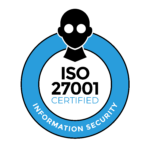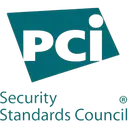Regulatory risk is, simply put, any possibility that changes in laws and regulations may adversely affect your organization’s business operations, financial health, or strategic direction. Your organization may easily adapt to these changes, or you may struggle to comply with new or revised governance standards, which could impose additional costs, result in legal penalties, or cause operational difficulties.
So, how can your organization keep pace with regulation changes and maintain your competitive edge? In this blog post, we dive into practical approaches to managing regulatory risks, ensuring compliance, and setting up effective systems to thrive even under stringent regulatory scrutiny. Read on to strengthen your organization’s resilience against regulatory tides without compromising agility or growth opportunities.
Key takeaways
- Effective risk management is crucial for organizations to navigate changes in laws and maintain compliance, ultimately protecting them from financial losses, reputational damage, and operational risks.
- Agencies such as the Financial Industry Regulatory Authority (FINRA) and laws like the Foreign Corrupt Practices Act (FCPA) and the Bank Secrecy Act (BSA) are critical in setting regulatory standards that companies must adhere to, particularly in financial dealings and international business practices.
- In addition to the key regulations already mentioned, it’s important to be aware of other industry-specific frameworks that may apply to your business, such as the General Data Protection Regulation (GDPR) for companies operating within the European Union, or the Health Insurance Portability and Accountability Act (HIPAA) for entities handling healthcare information in the United States. These frameworks have their own rules and compliance requirements that are vital for businesses to understand and integrate into their regulatory risk management strategies.
- Proactive and strategic regulatory risk management involves assessment of potential risks, development, and implementation of controls, and ongoing monitoring and review to ensure compliance, with the backing of advanced technologies and a strong culture of compliance within the organization.
Understanding regulatory risk: Definition and implications
As mentioned at the top, regulatory risk refers to the potential for adverse effects resulting from changes to laws, regulations, or industry standards. These risks arise when an organization struggles to adhere to the specific requirements outlined by regulatory bodies such as governmental agencies or industry watchdogs.
For instance, in the context of data privacy, failing to encrypt sensitive customer information as mandated by GDPR can pose a regulatory risk, leading to hefty fines or legal penalties.
Key characteristics of regulatory risk include:
- Legal repercussions: Non-compliance with regulations can lead to legal repercussions, including fines, lawsuits, or sanctions imposed by regulatory authorities.
- Reputational damage: Violations of regulations can tarnish your organization’s reputation, eroding customer trust and confidence in its ability to safeguard sensitive data.
- Financial implications: Regulatory penalties and fines can impose significant financial burdens on businesses, impacting profitability and long-term sustainability.
- Industry-specific requirements: Different industries have distinct regulatory frameworks tailored to address sector-specific challenges and concerns. Compliance with these regulations is essential for maintaining operational integrity and competitiveness within the market.
Learn more about regulatory risk examples here.
Regulatory risk versus compliance risk
While regulatory risk focuses on external changes to legal obligations and governmental mandates, compliance risk centers on internal mechanisms and controls established by organization and compliance frameworks to ensure adherence to regulatory standards.
In essence, regulatory risk underscores the consequences of non-compliance with changes to regulations, whereas compliance risk highlights the challenges associated with maintaining controls and processes to mitigate regulatory liabilities.
Compliance risk pertains to the likelihood of failing to adhere to existing policies, procedures, or standards established by an organization to ensure adherence to regulatory requirements.
Key business regulations and their impact
Picture your business as a ship on a voyage. Its course is both supported and controlled by the sea, i.e. various regulations. These regulations come in various forms, some specific to your industry. For financial institutions, it’s a particularly complex voyage, with regulatory bodies like the Financial Industry Regulatory Authority (FINRA) charting the path for things like disclosure, investment strategies, and liquidity.
Some regulations are like calm seas, offering support and protection for organizations, while others can feel like stormier conditions, limiting and challenging how your businesses can operate. It’s important for businesses to understand that while regulations might limit down economic efficiency and profitability, they’re also there to offset the less desirable impacts of business activity.
Let’s look at some of the key regulations that impact businesses:
Anti-Money Laundering (AML)
Anti-money laundering regulations are designed to prevent the integration of illicitly obtained funds into the legitimate financial system (i.e. to prevent money laundering.) Changes in AML regulations can introduce significant regulatory risk for financial institutions that must quickly adapt their monitoring and reporting systems to remain compliant.
For example, the introduction of the 5th Money Laundering Directive in the EU expanded the scope of regulated entities, requiring more businesses to perform due diligence checks, thus increasing their regulatory burden.
Anti-Bribery and Corruption (ABC)
Anti-bribery and corruption laws, such as the FCPA and the UK Bribery Act, set out the legal parameters for businesses to prevent corruption in their operations, especially in international transactions. Regulatory changes in ABC laws can expose companies to greater risk if they fail to adapt their compliance programs accordingly.
Tariffs and trade policies
Tariffs and trade policies can be volatile, particularly in times of political change or economic turmoil. Changes to these policies can affect the cost and feasibility of cross-border trade, creating regulatory risk for businesses reliant on international supply chains.
An example of this is the trade tensions between the US and China, where the imposition of new tariffs required businesses to reassess their sourcing strategies to mitigate the financial impact.
Tax regulations
Tax policies are subject to change as governments seek to address fiscal needs or incentivize certain behaviors. Changes in tax regulations can lead to compliance risks, requiring businesses to update their financial systems and reporting processes. For instance, the overhaul of the US tax system with the Tax Cuts and Jobs Act of 2017 meant companies had to navigate a new set of deductions and international tax provisions.
Labor laws
Labor laws (including minimum wages, vacation, and sick days) are crucial for businesses to manage as they directly affect operational costs and employee relations.
Changes to these laws can create regulatory risk if companies do not adjust their employment practices and payroll systems. An example is the gradual increase in the minimum wage in several US states, which businesses must incorporate into their financial planning to remain compliant with labor standards.
Five steps to effective regulatory risk management
Managing regulatory risk starts with identifying potential risks using risk assessment matrices and involving cross-departmental teams. (Aside: Many of the same steps are used to manage compliance risk.) Assigning clear roles ensures that everyone understands their responsibilities in maintaining compliance.
To mitigate control risk, companies should consider:
- Training employees to be aware of regulatory requirements
- Diversifying market presence to lessen the impact of trade policy changes
- Transferring risk with insurance models
- Accepting risk when the benefits justify the potential costs
This approach requires a thorough understanding of regulations and the ability to adapt to changes. Let’s look at the key steps your organization should take to manage risk:
1. Complete a detailed risk evaluation
Before a company can begin to mitigate risk, it is essential to conduct a comprehensive survey of the regulatory landscape to uncover where potential dangers might lurk. This meticulous process involves identifying the specific laws, regulations, and industry standards that pertain to the company’s activities and how data is managed within the organization.
A thorough review of the company’s existing policies, procedures, and protective measures is then carried out to pinpoint any areas that fall short of the stringent regulatory requirements. Following this, careful analysis evaluates the regulatory risks, arranging them in order of their potential impact on the company’s operations, reputation, and financial well-being.
2. Develop robust compliance frameworks and protocols
To mitigate regulatory risk, it’s crucial for companies to establish clear and thorough compliance frameworks and protocols. This involves developing explicit written guidelines that clearly delineate compliance obligations, roles, and procedures for staff members.
Additionally, it’s important to enforce internal safeguards and mechanisms that ensure adherence to regulatory mandates, such as implementing access restrictions, encrypting data, and utilizing tracking systems. Beyond structural safeguards, it’s equally important to foster a culture of compliance through staff training.
By continuously raising awareness among employees about the importance of regulatory demands, their role in maintaining compliance, and the serious repercussions of non-adherence, companies can better equip their workforce to uphold the necessary standards and contribute to the overall risk management strategy.
3. Activate ongoing monitoring and watchfulness
Constant vigilance is key to anticipating potential regulatory breaches. Your organization must be constant in monitoring compliance. Good news: You can us tools and technologies designed to oversee data management activities. These systems are designed to detect anomalies that may signal non-compliance, thereby reducing the likelihood of regulatory infractions.
Equally important is the practice of conducting routine evaluations/audits. These evaluations serve as a health check for the organization’s compliance measures, highlighting vulnerabilities and providing the opportunity to address and rectify any lapses in adherence to regulations.
Furthermore, establishing channels through which employees can report suspected compliance violations is vital. Such whistleblower systems cultivate an environment where transparency and accountability are valued and encouraged. This not only helps in identifying potential issues early on but also reinforces a company-wide commitment to upholding regulatory standards.

Continued reading
The 10 risks you should be monitoring at your organization
While you consider which methodology to adopt, understand the risks every business should be tracking to maintain their security posture.
4. Stay up-to-date and adjust to regulatory shifts
Regulations are always in flux, which means organizations need to be alert to new regulations and adapt their compliance strategies as needed.
Staying abreast of regulatory developments involves regular monitoring of regulatory news, industry publications, and professional networks to catch wind of updates to existing regulations and new compliance trends.
Building communication lines with regulatory bodies and industry groups is also key to getting advice, clarifying regulatory demands, and staying informed about enforcement actions, timelines, and more.
Moreover, it’s important to understand that revamping compliance guidelines and protocols is not a one-time event but a continuous process. This ensures that a company’s practices remain in alignment with the latest standards and best practices.
5. Cultivate a compliance-first culture
Building a company culture that prioritizes compliance is vital for achieving and maintaining ongoing adherence to regulations. This involves fostering an environment where leadership demonstrates a strong commitment to compliance through their actions, setting an example for ethical conduct, and providing the necessary resources for compliance-related activities.
Employees at every level should be involved in the compliance process, with their feedback valued, their concerns addressed, and their efforts in upholding compliance standards acknowledged. Recognizing and rewarding employees for excellence in compliance further emphasizes the importance of meeting regulatory demands and reinforces the culture of compliance throughout the organization.
By embracing these steps and weaving them into your compliance strategy, your organization can effectively reduce regulatory risk, strengthen its compliance stance, and confidently navigate the ever-changing regulatory environment.
Using technology to help with regulatory risk management
If this sounds overwhelming, you’ll be happy to read that regulatory risk management need not be a manual process. Automation and compliance monitoring tools greatly help streamline processes, reducing errors, and enhancing efficiency. Some key benefits of regulatory compliance software and automation include:
- Managing risk and ensuring compliance amidst the constant flux of regulations and requirements
- Streamlining processes and reducing manual effort
- Decreasing errors and improving efficiency in compliance management
- Utilizing AI and machine learning to automate tasks and enhance accuracy
These tools act as the ship’s autopilot, helping organizations navigate the complex world of regulatory compliance.
Moreover, advanced data analytics tools and AI-driven risk assessment tools enable a comprehensive evaluation of potential compliance issues from vast data sources to improve compliance strategies. Regulatory compliance becomes more manageable with technologies that centralize systems and automate workflows, streamlining the reporting and documentation required.
Choosing the right regulatory compliance software
Organizations across various industries have successfully navigated the complex seas of regulatory compliance using technology platforms, maintaining rapid growth and managing their numerous regulatory obligations.
When assessing software, look for a solution like Thoropass that offers adaptability to regulatory changes—guaranteeing the agility to meet new standards and keep your business on a steady course. The right tool should simplify your journey through the complexities of regulation, allowing you to focus on your core business while it handles the intricacies of compliance.
Conclusion: Regulatory risk management requires constant vigilance
Regulatory compliance risk management is critical to protecting your organization from severe repercussions. But more than that, it also profoundly influences its operations, innovation, and success within its market. Mastering regulatory risk requires a deep understanding of its implications and sources, an awareness of key business regulations, and a proactive approach to risk management that includes the development of controls and continuous monitoring.
Technology, in the form of regulatory compliance software, helps you put risk management on autopilot guiding companies through the regulatory landscape with greater ease and precision. Training and culture anchor these efforts, ensuring that the human element—the crew of this ship—is prepared, vigilant, and committed to the culture of compliance.
More FAQs
What is the difference between regulatory risk and compliance risk?
Regulatory risk is associated with the potential effects that modifications in laws and regulations can have, whereas compliance risk pertains to the possibility of failing to adhere to existing laws and regulations. These risks combine to form a complex environment that organizations must carefully traverse in order to maintain effective compliance and risk management.
How can technology aid in regulatory compliance?
Regulatory compliance software can enhance the management and monitoring of regulatory compliance by automating evaluations, centralizing systems for better efficiency, and providing instant insights into compliance status. This technology helps in simplifying processes related to regulatory adherence, diminishing manual workloads as well as potential errors, thereby making the task of maintaining regulatory compliance more feasible.
Why is a culture of compliance important in an organization?
An organizational culture deeply rooted in compliance is crucial to mitigating regulatory risks, diminishing the likelihood of non-compliance incidents, and securing a uniform understanding and observance of established regulatory norms among all its members.
This adherence to compliance is thus essential for maintaining the organization’s vitality and long-term viability.
What can we learn from case studies in regulatory risk management?
Studies focusing on regulatory risk management provide essential lessons regarding the obstacles associated with adhering to regulations, effective tactics for compliance, and the repercussions of failing to comply. These highlight the critical need for vigilant oversight and robust frameworks in compliance management.
Ensuring adherence through rigorous compliance protocols can assist in evading possible consequences stemming from a breach in regulatory conformity.
Learn more about risk
Using a risk register for effective risk management
Understand how to leverage a risk register for tracking, analyzing, and mitigating risk when adopting an assessment and management methodology.

Related Posts
Stay connected
Subscribe to receive new blog articles and updates from Thoropass in your inbox.
Want to join our team?
Help Thoropass ensure that compliance never gets in the way of innovation.














.png)